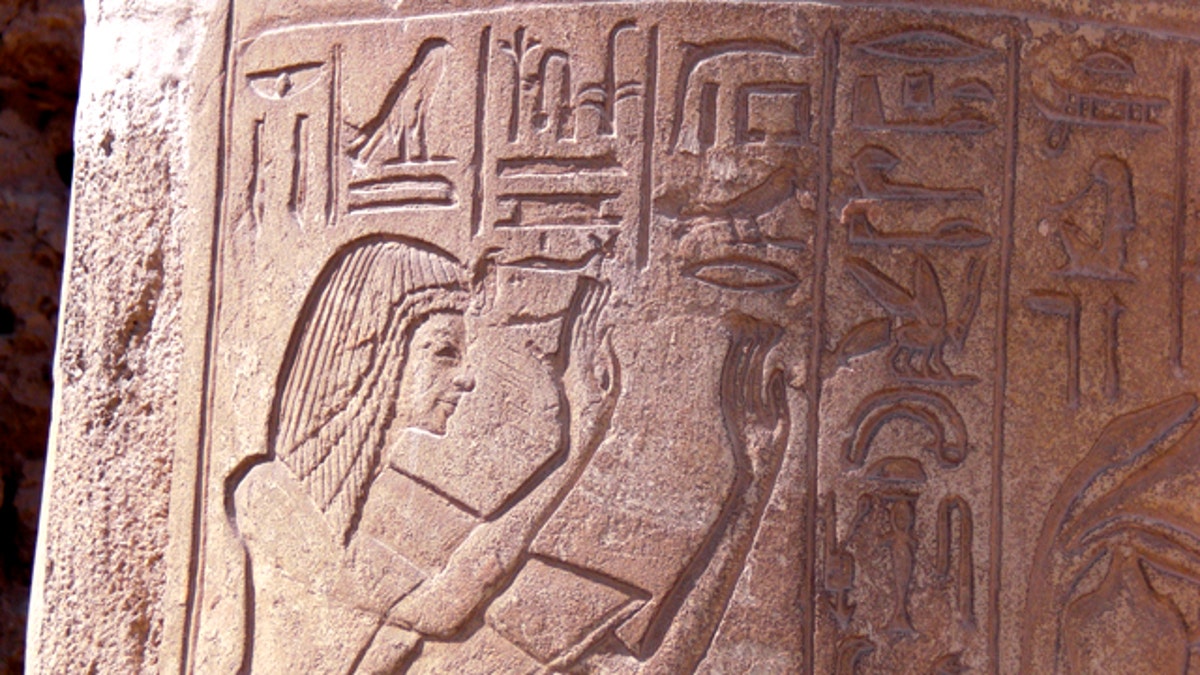
Carvings dot a column in the tomb of Horemheb, which will open to the public for the first time on Monday, May 23. (Supreme Council of Antiquities)
Dig this!
Egypt's top archaeologist Dr. Zahi Hawass announced Monday that the county will open a series of new tombs to the public, offering a never-before-seen glimpse of desert life thousands of years ago for the first time ever.
The six new tombs are located in the New Kingdom Cemetery in South Saqqara and include the tomb of Maya, who was the treasurer of King Tut, as well as the tomb of Horemheb, the general of King Tut who later became king.
Maya and Horhemb were very important men during one of Egypt’s most tumultuous periods, the Amarna Period, Egypt's Supreme Council of Antiquities explained in a press release announcing the opening of the tombs. During this time, the pharaoh Akhenaten closed Egypt’s most important temples in Luxor and moved the capitol to a site in the middle of the desert -- confusingly also called Akhetaten or Tell el-Amarna.
When Akhenaten the man died, his son Tutankhamen moved the religious capitol back to Luxor, reinstated the god Amun and abandoned the new site. To make all of these changes, King Tut needed the assistance of his treasurer and his general.
While his tomb was left unfinished, visitors will now be able to see the mudbrick pylon of Horemheb's tomb with relief fragments and courtyard images of Maya and his wife Merit, who was also buried in the tomb, receiving offerings.
Along with these two famous tombs, four other tombs will also be open to the public:
The tomb of Meryneith, steward of the temple of Aten during the reign of Akhenaten. His tomb is built of mudbrick encased in limestone blocks.
The tomb of Ptahemwia, the “Royal Butler, One of Clean Hands” to both Akhenaten and his son, Tutankhamen. Ptahemwia’s tomb is also mudbrick encased in limestone and contains three chapels. In one of these chapels, archaeologists team found 56 coffins from the New Kingdom.
The tomb of Tia- Tia, one of the top officials under Ramsess II. Tia’s tomb was also used as a mortuary temple to the god Osiris and contains depictions of Tia and his wife making a pilgrimage to Abydos, the cult center of Osiris.
The Tomb of Pay, one of Tutankhamen's men, and his son, Raia.
Some of these tombs were first discovered in 1843 but were not fully excavated until an Anglo-Dutch mission began digging there in 1975.
